
ABOUT MY MOSAICS
ORNAMENTS IN IRON AGE BROOCHES (2007-2009): In my first mosaic exhibitions I showed reinterpretations of ornaments and symbols in ancient iron age brooches found in Finland. More ...
MARY MOSAICS (2010-2011): My second mosaic project was a cross-cultural project together with Finnish chamber choir Novena: we combined music and mosaic inspired by the Virgin Mary. More ...
COMMUNITY MOSAICS (2011): The Mary project also resulted two community projects: I created two large mosaic works together with inhabitants in two buildings: a home for elderly and a home for young people with special needs. More ...
MOSAICS ON POETRY (2012-2013): In this project I created 44 mosaics inspired by a famous Finnish poet, Solveig von Schoultz. More ...
JOY AS THEME (2016-2018): The collaboration with textile artist Lela (Angela) Nybergh started in 2016. We both worked with the same theme - joy - but with different materials.
The result was an exhibition in 2017 in order to share our joy and spread joy around us. Our collaboration continued and our team was completed by Tiina Jåfs with ther ceramics and paintings.
In summer 2018 we had an exhibition "3" with works by the three of us.
MOSAICS ON WILD EDIBLE PLANTS (2021-2023): During the last years while living on the countryside, new experiences and acquaintaces have inspired me to create a series of mosaics with wild edible plants as theme.
More ...
ABOUT THE MATERIALS
Marble and ceramics - the traditional materials for the mosaics through milenniums - dominate in the works. I use both polished and riven marble. The marble is cut in pieces with a special mosaicist's tool - a hammer called marteline and a hardie. In the riven marble the crystalline inner body of the stone with its texture and colour variations is revealed.
In order to create a contrast to these rough natural materials I also use the typical Byzantine mosaic material, Venetian smalti which is fused glass coloured with metal oxides. The smalti has great intensity of colour and it exists in a vast range of shades. Marteline is also used for cutting smalti in small pieces, called tessarae.
Also the use of gold has its origin in the Byzantine mosaic art. The gold tessarae are the most luxurious of the materials used in mosaic arts. They are manufactured by applying a gold leaf on glass, then covering the gold with a thin skin of glass to protect the leaf where after the material is again fused and cut into tessarae to be used by mosaicists.
In addition to these traditional mosaic materials I have used vitreous glass, which is the material most often used in contemporary mosaics. In some details I also have used glass, porcelain, small semi-precious stones, mother-of-pearl, sea pebbles, sand, brass or copper.
Mosaics with Iron Age ornaments
I have had several exhibitions in Finland and abroad with mosaics inspired by ornaments in Iron Age brooches and other artefacts found in Finland.
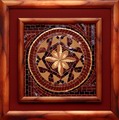 |
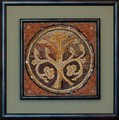 |
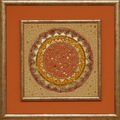 |
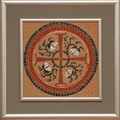 |
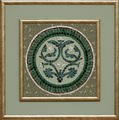 |
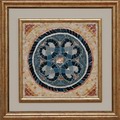 |
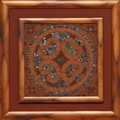 |
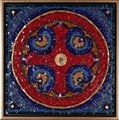 |
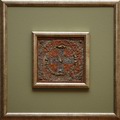 |
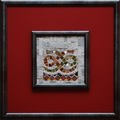 |
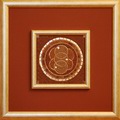 |
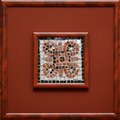 |
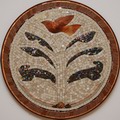 |
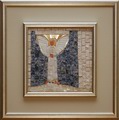 |
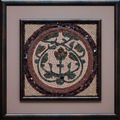 |
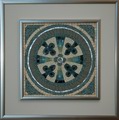 |
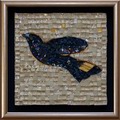 |
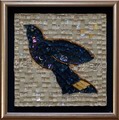 |
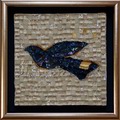 |
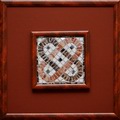 |
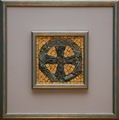 |
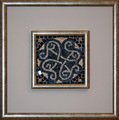 |
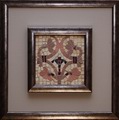 |
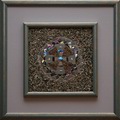 |
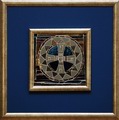 |
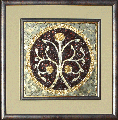 |
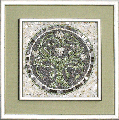 |
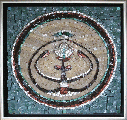 |
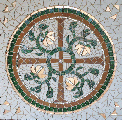 |
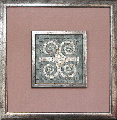 |
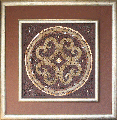 |
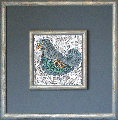 |
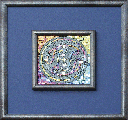 |
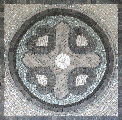 |
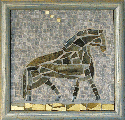 |
The theme with the brooch ornaments is based on the Finnish cultural heritage and is rich and endlessly varied. The collection of ancient brooches in The National Museum of Finland as well as the literature and the images in the archives of The National Board of Antiquities in Finland have been an unvaluable source of information and inspiration in the creation process. The archaeologists and the historians have thoroughly documented the findings from the Iron Age. In some extent they have also been able to interpret the symbols in the ornaments and the meaning of the brooches to their owners. During the Iron Age the brooches were not only decorations - they were important details in the costumes as different garments could be fastened to each other with them. They also followed their bearer to the grave.
In my works the ornaments and symbols in the ancient brooches are displayed in reinterpretations by means of mosaic. In order to make the mosaics, I have chosen a handful artefacts some of which are from the Merovingian period (600-800 A.D.), some from the Viking period (800-1050 A.D.), but most from the Crusades (1050-1300 A.D). The majority of these brooches have been found in Carelia, a part of Finland surrendered to the Soviet Union after World War II. The rest of the items have been found mostly in the regions of Savo and Satakunta. The original artefacts were mostly made of silver and bronze. Most of artefacts I have chosen as background for the mosaics are brooches or pendants but there are also some belt mounts, a ring and a gilded part of a shield among them. I have chosen the materials for the mosaics with the intention to convey the feeling of the ancient origin of the ornaments.
Mary mosaics
My Mary Mosaics - some twenty mosaic works that were exhibited in Gallery Dix in Spring 2011 - are inspired by the rich musical and symbolic heritage attached to the Virgin Mary. The Mary mosaics are a part of the Virgin Mary Project a cross-cultural project, in which the Finnish chamber choir Novena and I combined music and visual art. The result was a mosaic exhibition in a gallery, a CD with mosaic illustrations and several concerts with mosaic works shown during the concert. The project also donated one of the mosaics to the Espoo Swedish parish. .
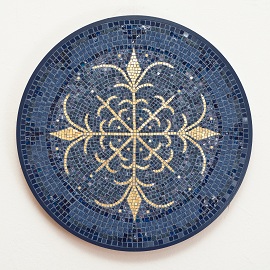 |
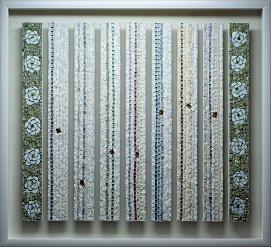 |
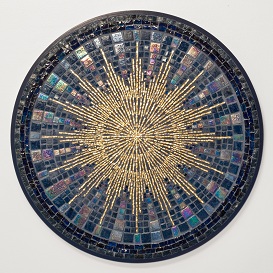 |
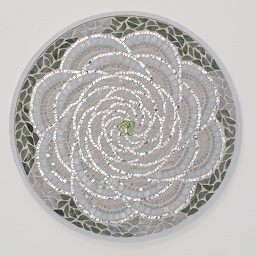 |
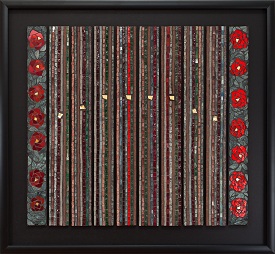 |
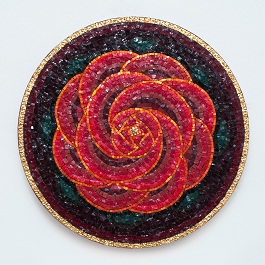 |
The donated mosaic work Ave Maria is situated in Olari Church.

The mosaic "Annunciation" is in the chapel of the Retreat Centre Snoan.

Community mosaics
During the Autumn 2011 I worked with two very interesting projects that were initiated during the Virgin Mary Project:
- A large mosaic work that we created to the restaurant in Folkhälsanhuset in Espoo. The building combines a home for elderly, a home for disabled persons, a school and a music school. The inhabitants create a mosaic work together with me.

- A mosaic mural to Stjärnhemmet (also in Espoo). Stjärnhemmet is a home for a group of young people with special needs. We created together a mosaic mural to the building. The mosaic project was supported by Arbetets Vänner, Konstsamfundet and Kalevala Korun kulttuurisäätiö.

Mosaics on Poetry
I have created a series of mosaics inspired by a famous Finnish poet, Solveig von Schoultz (1907-1996). The mosaics are also a hommage to Solveig von Schoultz. She wrote her poems in Swedish but a large number of the poems have been translated to Finnish by Helena and Tuomas Anhava.

Mosaics on Wild Edible Plants
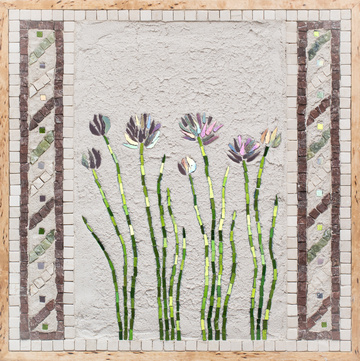
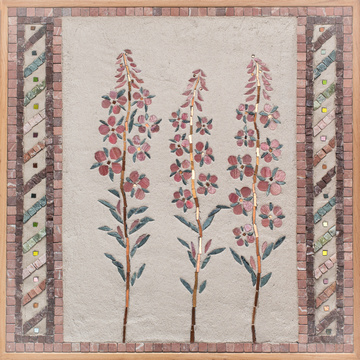
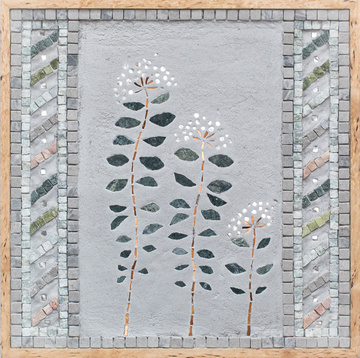
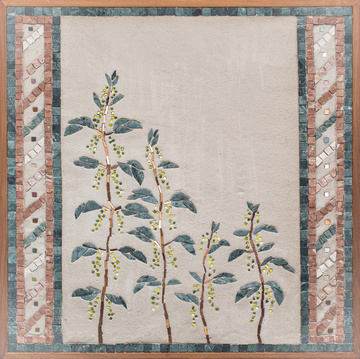
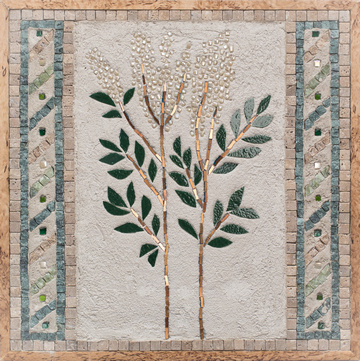
The source of inspiration for my mosaics with wild edible plants as theme in the idyllic Munsterhjelm Art Center with it's summer exhibitions and Catherine Munsterhjelm's guidings on wild edible plants. Her devoted work in spreading knowledge about the plants and the whole family Munsterhjelm's green lifestyle at the art center was the starting point for this series of mosaics.
More about the Munsterhjelm Art Center:
www.munsterhjelmartcenter.fi


